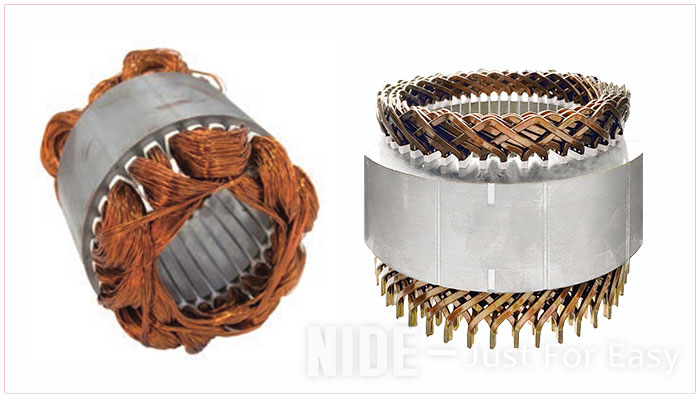Industry News
How to improve the cooling capacity of new energy vehicle motor?
The core of really evaluating the quality of the motor is heat dissipation. Whether it is the acceleration capability of the electric car, the long-lasting extreme speed performance, or the economical power consumption level, it is inseparable from the support of heat dissipation. Heat dissipation determines both the upper limit and the lower limit of the motor.
How to improve the cooling capacity of new energy vehicle motor?
In the era of new energy electric vehicles, the two most used motors are permanent magnet synchronous motors and AC asynchronous motors. Although the outside world has different opinions on the two types of motors, in fact, both have their own advantages. Some people think that the quality of a motor should be related to its performance parameters, such as acceleration, top speed and power consumption. No matter what kind of motor it is, as long as these three parameters are higher, the motor will be better.
But in fact, extreme speed, acceleration, and power consumption cannot determine the quality of the motor, because behind them, there is another core element that limits their upper limit, which prevents the motor from making more extreme performance.
The core of really evaluating the quality of the motor is heat dissipation. Whether it is the acceleration capability of the electric car, the long-lasting extreme speed performance, or the economical power consumption level, it is inseparable from the support of heat dissipation. Heat dissipation determines both the upper limit and the lower limit of the motor.
For example, the permanent magnet synchronous motor is particularly dependent on heat dissipation because its rotor uses permanent magnet materials. At high temperatures, the permanent magnets will have the risk of complete demagnetization and are irreversible.
As for the AC asynchronous motor, because the rotor uses a traditional coil winding structure, it will emit a lot of heat when it is running at full load. Excessive temperature will not only melt various internal insulating materials, but even burn the The windings also melt away.
Therefore, in order to ensure that it does not overheat, many car companies strictly limit the speed of the motor, which leads to the inability of many trams to exert the ultimate acceleration, extreme speed and other performances; only when the heat dissipation is improved, the motor can release the limit and continue to develop. Possibility.
What should an excellent motor cooling look like?
Now many automotive motor manufacturers are improving the technical layout of the motor cooling capacity, focusing on flat wire motors, sheet lamination technology, and oil cooling systems.
1. Flat wires replace round wires
Compared with the traditional round wire motor, the flat wire motor can not only increase the working efficiency by about 10%, but also increase the heat dissipation capacity by 10%, which can be said to be an all-round improvement.
In the round wire motor, the stator winding is composed of many round copper wires, which has a limited ability to share the current, and the space utilization rate is not high, which will release more heat. The flat wire winding uses rectangular copper strips to completely fill the slot space in a simple stacking manner, and the current can be shared by flat wires with a larger diameter and larger surface area, thereby reducing heat generation.
At present, the permanent magnet synchronous motors of many new energy vehicles use 10-layer flat wire windings. Although the more flat wire windings, the better, it is hard to say that there are no such advantages as low power consumption and high speed while improving heat dissipation. This 10-layer flat wire winding is credited.

2. Using sheet lamination process
The motor rotor structure using the lamination process of thin slices looks like countless cucumber slices assembled into a whole. Car companies choose to cut the rotor into countless thin slices. While reducing the volume of the rotor, the generation of current loops is reduced, and the thin slices are connected by welding and other processes.
The biggest beneficiary of the lamination process is the permanent magnet embedded in it, because it is most sensitive to high temperature. As long as the temperature of the rotor is controlled, the stress on the permanent magnets can be much less.
In addition, a small amount of silicon is added to the material of the rotor sheet, which can also change the electrical conductivity of the rotor, thereby controlling heat.
3. Replace water cooling with oil cooling
The oil cooling can go deep into the place where the water cooling can't reach, and it is non-conductive and non-magnetic. It can directly go deep into the internal area of the motor that many water-cooling pipes can't go deep into, thereby greatly improving the heat dissipation capacity.
At present, many automobile manufacturers and motor suppliers are actively promoting corresponding technologies and processes around heat dissipation performance. In fact, there is still a lot of room for optimization. Some have achieved good results, but because the cost cannot be reduced in a short period of time, they cannot Mass production. With the gradual decline in the cost of related technical materials and processes, the heat dissipation performance of the motor will be steadily improved after all, and after the "heat dissipation" seal is completely removed, the overall performance of the motor will also be truly qualitatively changed.













